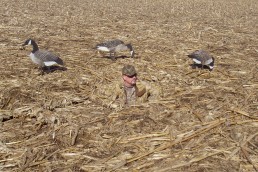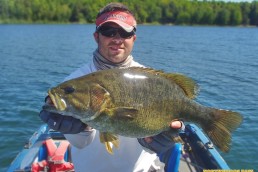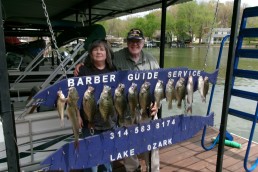Good Duck Blinds Provide a Convincing Hide
SHARE THIS POST
Yes, that’s right; duck blinds are to hide in. So are goose pits. Novice hunters don’t always know this. You often see them outside the hide, walking around, stretching their legs, or attending to a call of nature. Experienced hunters do know it, but still you will see them outside the hide, walking around stretching their legs, or attending to a call of nature.
In the days of yore, hundreds of thousands of Canada geese spent their winters in southern Illinois. The three big refuges were surrounded by commercial goose-hunting clubs. The many pits on those clubs were usually little more than 200 yards apart. If anyone crawled out of a pit, they instantly ruined the hunting for all those in that field.
But still, during those long dry spells between flights, boredom would prompt some nimrod to get out and walk around. The callers (guides) would immediately cut loose on their goose calls, sending the strolling miscreant diving headlong into the gumbo, thinking a honker was coming into the field. He soon realized his error when howls of laughter erupted from the surrounding pits.
Just keep your head down, Tex
Those good old “Quota Zone” days are long gone, but the need to hide in your blind surely is not. Staying in your blind and keeping your head down will always hide you, but what hides the blind? For the first few days of the season, it probably doesn’t matter much. But, it doesn’t take long to educate the birds to the perils of flying too close to an unnatural-looking object, and a poorly concealed blind is definitely unnatural.
Many hunters get their blind ready well in advance of the season opener. They clean out the dirt, spent shells, and dead mice. Then, they will patch any rotted wood, make sure the roof doesn’t leak, and tend to any other needed repairs. Then, it is time to disguise the blind itself with a camouflage covering.
Available for this purpose are a wide variety of artificial grasses, reeds, and netting that will do the job admirably, but since they don’t give that stuff away, many hunters prefer to use natural cover gleaned from nearby vegetation. Either option will result in a fine job and perfectly conceal the blind itself, but neither is permanent.
Wind and weather take their toll
Artificial netting is subject to deterioration due mainly to weather. It can fade, or be torn loose by wind, freezing rain, or snow. Now and then some critter will decide to chew a big chunk of the cover off, exposing a portion of the blind itself. And, while this doesn’t happen very often, it can be stolen.
To remedy any of these problems, always have an emergency supply of the netting in reserve. Don’t leave it in the blind, it makes perfect mouse nest material. When you need it, they could have turned it into a pile of dust.
Are you enjoying this post?
You can be among the first to get the latest info on where to go, what to use and how to use it!
Natural vegetation has all the above flaws, except theft. Plus, Mother Nature has designed it to slowly disintegrate. Over the course of a waterfowl season, it will need regular replacement. Again, it is prudent to keep a good supply of whatever you are using cut and handy for instant repairs.
By land or by lake
If you are hunting from a water blind, you only need to concern yourself about the blind itself. If you use a pit or a field blind, you have to be aware of the area all around the blind.
In early fall, when you initially built the blind, the surrounding ground was covered with natural vegetation, be it weeds, or agricultural chafe or stubble. If you put good overhead cover on the pit/blind, you were good to go. After a few weeks of use, much of that ground cover will have been walked down by the hunters. From a bird’s perspective, a big bull’s eye will have been formed with your pit/blind in the center. Not good.
To avoid such a situation, try to approach and leave the blind from one single trail—leaving all other vegetation undisturbed. Have a pile of weeds, corn stalks, or bean chaff handy to periodically cover any exposed ground along the trail. Make the trail straight out from one end or the other of the pit/blind, not out the front where it acts as a pointer directly to the hide.
Clean up the area around the blind. Shell casings and boxes, paper, candy wrappers, and pop cans are dead giveaways to the birds that something is amiss. They will flare every time.
Remember, these waterfowl have been dealing with hunters all through the season. They are getting harder to fool every day. The dumb ones are residing in some hunter’s freezer. The live ones are all survival school graduates.
That is why we have duck blinds to hide in.
MWO
SHARE THIS POST
Did you enjoy this post?
You can be among the first to get the latest info on where to go, what to use and how to use it!
Jerry Pabst
Jerry Pabst has been writing about the outdoors for over 40 years. He captained a Lake Michigan charter boat for 25 years and was inducted into the Fresh Water Fishing Hall of Fame. He has hunted waterfowl in all North American flyways, pursued upland game extensively, and trains his own dogs.



